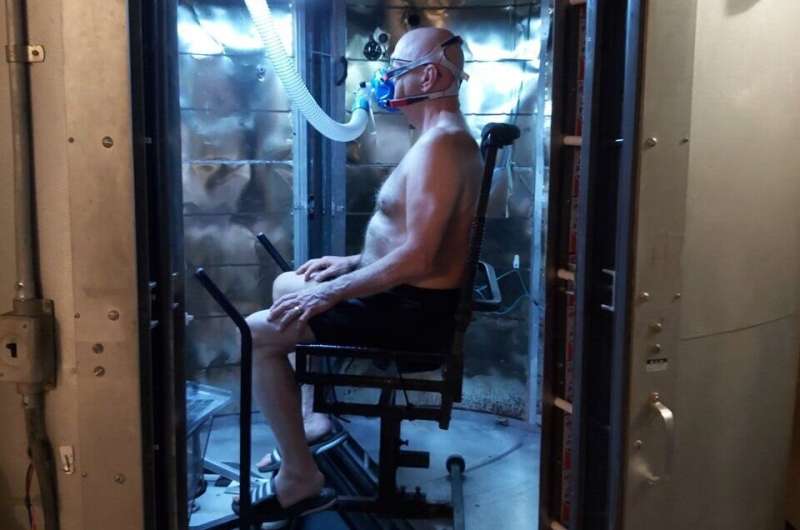Why older people should chill when it's hot out

Taking a break from extreme heat, by visiting a cooling center for example, could help our cells protect themselves from damage, according to preliminary findings from a new study. The research, which focused on older people, suggests temporarily cooling down on a hot day helps cells maintain autophagy, a process cells use to rid themselves of dangerous protein buildups caused by stressors like extreme heat.
"By lessening the time spent in a state of elevated internal body temperature, cooling centers may help to preserve autophagy in older adults, which may translate to greater cellular protection and improved health outcomes during an extreme heat event," said James J. McCormick, Ph.D., a postdoctoral fellow at the Human and Environmental Physiology Research Unit of the University of Ottawa in Canada, and the study's first author.
McCormick will present the research at the American Physiological Society annual meeting during the Experimental Biology (EB) 2021 meeting, held virtually April 27-30.
Sustained elevations in internal body temperature can lead to heat stroke, cardiovascular events and kidney failure. Older people are particularly vulnerable since the body's systems for regulating temperature degrade as we age.
During periods of extreme heat, health agencies recommend that people without home air conditioning spend a few hours in a cooled location, such as a cooling center or heat-relief shelter. However, there has been little research into how visiting a cooling center actually affects the physiological processes associated with heat exposure.
"With climate change, the global population is increasingly exposed to protracted periods of extreme heat," said Robert D. Meade, a doctoral candidate who is part of the research team. "Prolonged exposure to hot temperatures can overwhelm the body's ability to cool itself, particularly in older adults. Thus, there is a crucial need to develop evidence-based guidance for protecting older adults from extreme heat."
The researchers analyzed how older people responded to a simulated heat wave with and without a cooling break. A total of 17 volunteers spent nine hours in a room heated to 40° C (104° F). In the middle of the day, seven of the volunteers had a two-hour break in a room that was a comfortable 23° C (73° F).
While the cooling break did not result in lasting reductions in participants' core body temperature, these participants did show improved markers of autophagic function compared to the group that endured high heat for the full nine hours. The findings suggest that visiting a cooling center could help older people avoid some of the cellular damage that may contribute to serious health impacts of heat exposure, according to researchers.
The researchers plan to conduct further studies to determine whether other cooling strategies, such as using a fan, could also help to preserve autophagic function in older adults.
More information: McCormick will present this research in poster R3744 (abstract).
Provided by Experimental Biology



















